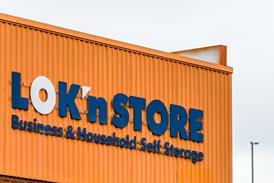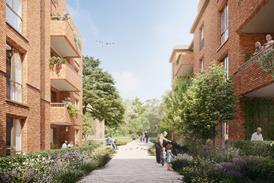Last night, the cream of London’s residential property market were due to pack into Soho’s Archer Street Bar for the launch of the annual CBRE Hot 100, where we benchmark the most important trends in the sector right now.
Last night, the cream of London’s residential property market were due to pack into Soho’s Archer Street Bar for the launch of the annual CBRE Hot 100, where we benchmark the most important trends in the sector right now.
Today, I can share some of the key findings of the 10 lists that make up the 100 with Property Week readers — and they are a microcosm of a market that has become the talk of the global residential world.
Last month, our Global Living Report showed that London now leads the way in average prime residential new-build prices, at £2,000/sq ft. This outstrips Hong Kong at £1,950/sq ft and New York at £1,800/sq ft. So what other new trends do we see in our Hot 100 research?
First, UK buyers are now more receptive to buying homes in new towers. Only five years ago, there was a very British tendency to favour low-rise housing, but now they increasingly favour having all their amenities, for instance restaurants, gym and a concierge, in one high-rise building. We are bound to see more iconic towers in central London and beyond.
We also identify London’s zones two to five for growth, with projects such as Knight Dragon’s 10,000-unit Greenwich Peninsula scheme already seeing strong demand among UK buyers as well as international buyers.
Commuter towns
Further out, we see commuter towns continuing to thrive, with Crossrail driving great activity in towns such as Maidenhead. People still don’t grasp the fundamental effect the project will have on people’s lifestyle as commuting times across the South East are slashed.
Our Hot 100 shows strong demand will continue to attract new entrants to the London development market, with China’s Dalian Wanda at Nine Elms, India’s Lodha in Grosvenor Square and China’s Greenland at Canary Wharf and Ram Brewery in Wandsworth.

We rank the 10 boroughs with the highest share of private rental households: City of Westminster, City of London, Kensington & Chelsea, Newham, Tower Hamlets, Camden, Hammersmith & Fulham, Wandsworth, Haringey and Brent.
There has been a huge growth in the private rented sector (PRS) over the past decade as affording property and mortgage availability have become more challenging.
There are now 1.5 million more renters across the UK, with the sector accounting for 25% of all households in London and the majority of new households formed.
Against this backdrop, it is crucial for the government to continue to support Help to Buy to enable people to get onto the housing ladder and for a promising regional PRS sector to start to thrive.
However, some boroughs in London do continue to be affordable and provide good value for money. And they are not all on the fringes of London, with several in zone 2.
The 10 most affordable boroughs to buy in according to the house price to earnings ratio — with ratios calculated by dividing house price by the median earnings of a borough — are:
- Barking and Dagenham (5.58%);
- Tower Hamlets (6.89%);
- Hillingdon (7.37%);
- Croydon (7.65%);
- Havering (7.71%);
- Newham (7.82%);
- Bexley (7.88%);
- Sutton (8.33%);
- Lewisham (8.46%);
- Redbridge (8.84%).
In each case, the house price to earnings ratio is between 5% and 10%, compared with 15%-plus in Camden, Hammersmith & Fulham, City of Westminster and Kensington & Chelsea at 30-plus per cent.
At CBRE, we forecast that regional markets will catch up with London in terms of house price growth over the next five years. While we predict 31% growth for prime central London from 2015 to 2019, we also forecast 30% growth on average for the whole of the UK.
The international markets that have driven prime central London change quickly: in the past month I have travelled to Doha, Bahrain, Abu Dhabi and Dubai and as well as the golden postcodes of the West End, I was quizzed about zones two to five, as far afield as Guildford, about Crossrail.
That’s not to say there won’t be a slowdown in the three-month build-up to the general election, but what won’t change is that London is transforming before our very eyes.
Global demographics mean London is becoming an apartment-led city, because people from abroad now want to buy UK property to live in with their families.
Our Hot 100 shows the range and depth of this market — and I hope that everyone I saw at Archer Street last night took the chance to toast London, a global success story to make us proud.
Mark Collins is chairman of CBRE Residential.

























![Hilti[82]](https://d2bq2usf2vwncx.cloudfront.net/Pictures/380x253/9/0/6/1884906_hilti82_601642.jpg)



No comments yet